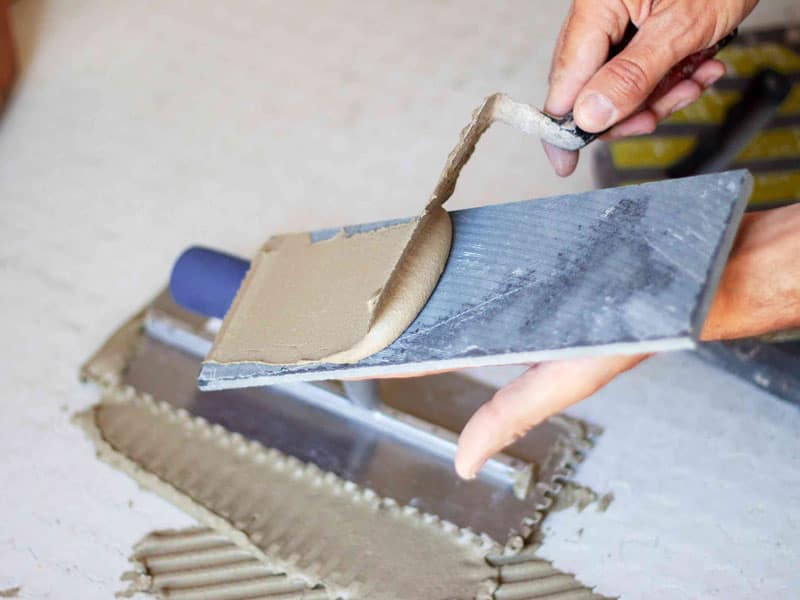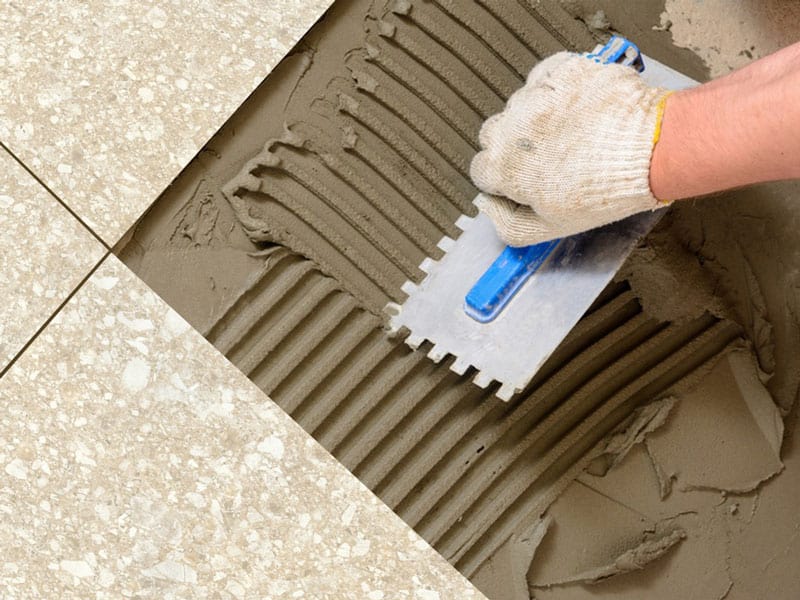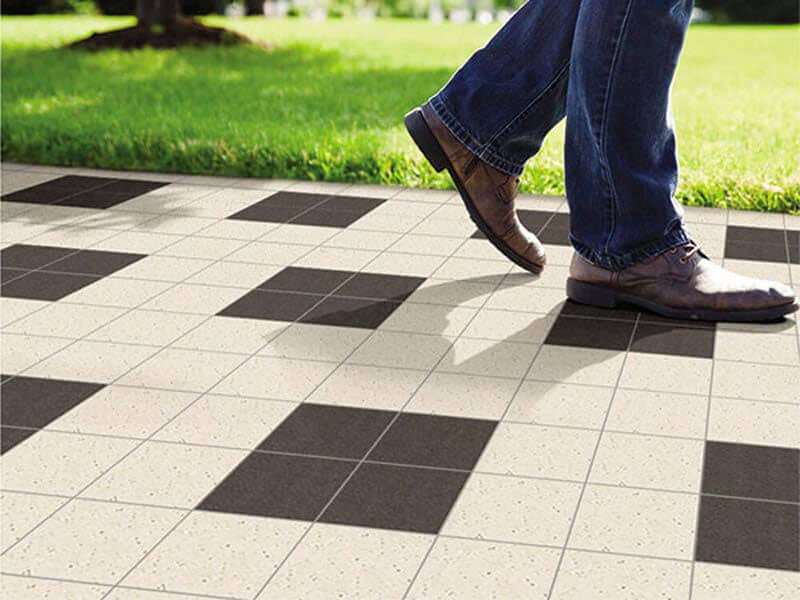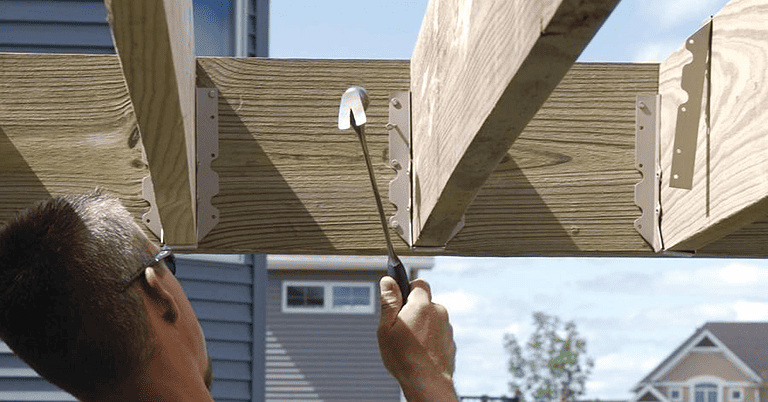How Long Does It Take For Thin Set To Dry
When installing tile surfaces, one of the most critical steps is applying the thinset mortar. Thinset mortar is a blend of Portland cement, fine sand, and other additives that create a strong adhesive for laying tiles. However, before you can start grouting and finishing the final polish of the tile installation, you must wait for the thinset to dry completely. So, what is the thin-set dry time?
The thinset drying time depends on various factors, like humidity, air temperature, and the type of thinset used. Typically, thinset mortar can take 24 to 48 hours to dry fully under normal conditions. However, some quick-setting mortar options can dry faster, and curing in some mortar takes as little as a few hours.
The instructions will detail the right mortar mix, recommended curing times, drying time, and proper application techniques. Waiting at least 24 hours before grouting is essential to ensure the thinset is fully cured and the tiles won’t shift or move during the grouting process.
If you live in a humid climate or are installing tiles in a wet area, like a bathroom or laundry room, you may find your mortar take longer and for the thinset showing between tiles to fully cure. Giving the thinset mortar enough time to cure properly is crucial before exposing it to foot traffic or heavy appliances, such as moving washing machines into position.
In our guide, you can learn more about the thinset cure time and how it differs to how long does it take mortar to dry. By the end, unless you use a fast-drying mortar layer, you can learn ways to make thinset and tile mortar dry faster. (Learn How Long Does It Take Mortar To Dry)

What Is Thin-set?
If you plan to install tile surfaces in your home, you’ll likely need to use thinset mortar. Thinset is a tile adhesive used to attach tiles to various surfaces, including walls, floors, and countertops. It’s made from a mixture of cement, fine sand, and other additives, and it comes in a powder form you mix with water to create a paste. Thinset is designed to create a robust and durable bond between tile and the surface it’s applied to. Choosing the right mortar mix for your project is essential, as different thinset are designed for various applications.
For example, some thinset mortars are designed for high humidity or cold weather, while others are designed for use with heavy appliances or in areas with foot traffic. When applying thinset, it’s important to use the right tools and techniques to ensure the mortar dries properly under the tile and grout lines.
What Can Cause Tile Mortar To Take Longer To Dry?
While thin-set mortar typically takes around 24-48 hours to dry, there are several factors to increase the drying time.
Temperature and Humidity
The temperature and humidity in the room where you are installing the tile can significantly impact mortar cure and drying time. High humidity or cool temperatures can slow the drying process, while warm and low humidity can speed it up.
If you work in a humid environment, you may need to wait longer for the thin-set to completely dry. However, if the room is very dry, you may need to mist the tiles with cool water to prevent anything wet beneath them from drying out so your mortar cure goes according to plan.
Type of Thin-set
Several different thin-set mortar are available, each with its own drying time. Some thin-set mortars are designed to dry faster than others, so choosing the right type for your project is essential.
Quick-setting mortar, for example, can dry in as little as four hours, while other types may take up to 72 hours to dry completely. Also, brick mortar can have a different dry time than a mortar for walk on tile surfaces.

Thickness of Thin-set
The thickness of the thin-set layer can also impact drying time. Applying a thick layer of thin-set will take longer to dry than a thin layer. Additionally, if you are working with large tiles, you may need to apply a thicker layer of thin-set to ensure they are adequately supported. This can also increase the drying time.
Considering these factors, you can help ensure your thin-set mortar dries properly and your tiles are firmly set in place. Remember to follow the manufacturer’s instructions for the specific type of thin-set you use, and wait at least 24 hours before grouting or applying any weight or pressure to the tiles. You can create a beautiful tile surface for years with the right mortar mix and proper installation techniques.
How Long Does Thinset Need To Cure?
After you’ve spread the thinset mortar to install your new tile, you may wonder how long it will take to dry before applying grout. The curing process of thinset mortar is crucial to ensuring your walk-on tile installation is successful and long-lasting. Here’s what you need to know about how long it takes for thinset to cure:
Store mortar generally takes 24 to 48 hours to cure itself properly and fully. However, when applying mortar, the curing process can be affected by several factors, like humidity, airflow, and room temperature.
It’s essential to follow the instructions for the specific type of thinset you’re using, as they may have different recommendations for curing time. The goal of curing thinset is to allow it to dry completely and reach its maximum strength.
You should wait at least 24 hours before grouting your tiles, and it’s best to wait 48 hours if possible. This will give the thinset enough time to dry and cure properly, which will help ensure your tiles won’t shift or crack once they’re grouted. (Learn How To Fix Stripped Screw Hole In Metal)
It’s important to note that curing and drying are not the same thing. While the surface of the thinset may feel dry to the touch after a few hours, the curing process takes longer. You should avoid walking on or applying pressure to the tile until the thinset has fully cured, which can take up to a week or more, depending on the conditions.
To help the thinset cure faster, you can take several steps. First, ensure you’re using the right mortar mix for your project. Use a notched trowel to spread the mortar in a thin, even layer, and avoid using too much water when mixing the powdered mortar. You can also use a fast-drying or quick-setting mortar layer to speed up the drying process.
Average Drying Time For Thin-set
When installing tile, it’s essential to know how long it takes for the thin set to dry. The drying time can vary depending on several factors, like the type of tile, the type of thin-set used, and the conditions in which it is laid.
Ceramic Tile
For ceramic tile, the average drying time for thin-set is 24 to 48 hours. You should wait at least 24 hours before walking on the tile surface and 24 hours before applying grout.
Natural Stone
When installing natural stone tiles, the drying time can be longer than ceramic tiles. The average drying time for a thin-set is between 48 to 72 hours. Using the right mortar mix is essential when laying natural stone tiles. A powdered mortar mix that contains fine sand and Portland cement is recommended for natural stone tiles.
Glass Tile
Glass floor tiles require a faster curing thin-set because they are more delicate than other tile surfaces. Some manufacturers offer quick-setting mortar that takes two to three hours, enabling a one-day tiling and tile grout project.
However, it’s best to allow excess grout at least four to six hours of cure time before walking on this fast-setting thin-set. You should also avoid heavy appliances or foot traffic on the tile surface for at least 24 hours before applying grout.

How Do You Make Tile Mortar Dry Faster?
If you’re in a hurry to finish your tiling project, you might be wondering how to speed up the drying time of your tile mortar. Here are a few tips to help you make your tile mortar dry faster:
- Spread mortar with a notched trowel to ensure a thin, fast-drying layer. Your tile size can dictate the size of the trowel you need.
- Mix the mortar using room temperature water. Cold water can slow down the drying process.
- Shorten the mortar curing time by using a dehumidifier. This will help remove excess moisture from the air and speed up the drying process.
- Mortar cures on-air contact; thus, the more airflow, the faster the mortar drying time and the quicker the cure time. Keep the room well-ventilated by opening windows or doors.
- If you’re laying tile in an overly humid or cold area, the drying time can be increased by up to 2 weeks. To speed up curing time, keep your space well-ventilated unless it is cold, damp weather, as this will slow the curing process.
How Long Does Tile Mortar Take To Dry Before Walking?
Knowing how long you should wait before walking on the tile surface is essential when installing a tile. Tile mortar typically takes between 12 and 24 hours to dry under normal conditions. However, wait at least 24 hours before walking on the tile surface. This will ensure that the mortar is strong enough to support foot traffic and prevent damage to the tile surface.
It’s important to note you should not tile and grout on the same day. You should wait at least 24 hours before grouting the tile. This will allow the tile mortar to dry and cure appropriately before applying the grout. If you need to use the area where you’re tiling, it’s best to do it in sections. This will allow you to work on one area while the other area is drying.
You can also use a quick-setting mortar to cure in as little as 6 hours if you require a faster curing time. The drying time of tile mortar can be affected by various factors like humidity, temperature, and thickness of the mortar layer. (Read Can Propane Tanks Be Stored On Their Side)
In humid conditions, the drying time can be increased by up to 2 weeks. In cold weather, the drying process can also take longer. To ensure the tile mortar dries properly, follow the manufacturer’s instructions and use the right mortar mix. You should also spread the mortar evenly using a notched trowel and remove any excess mortar before laying the tiles.







